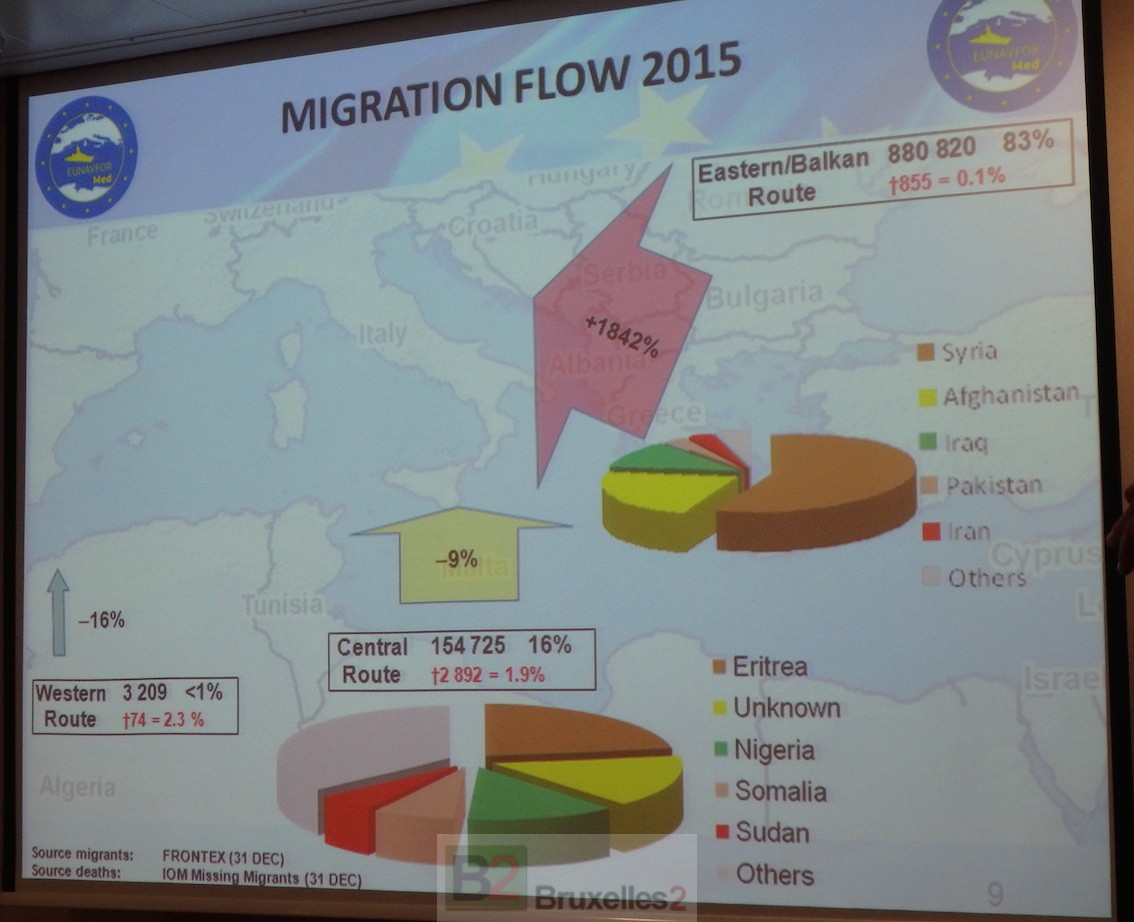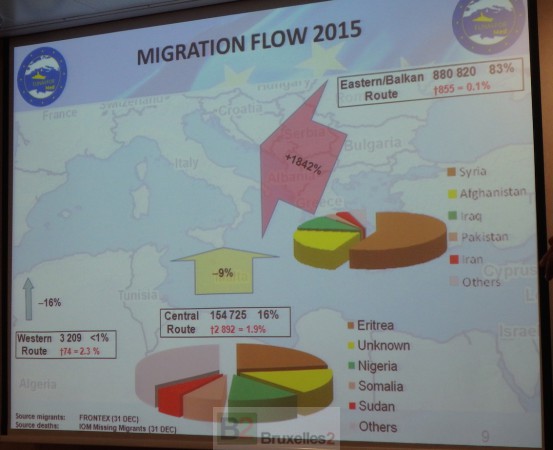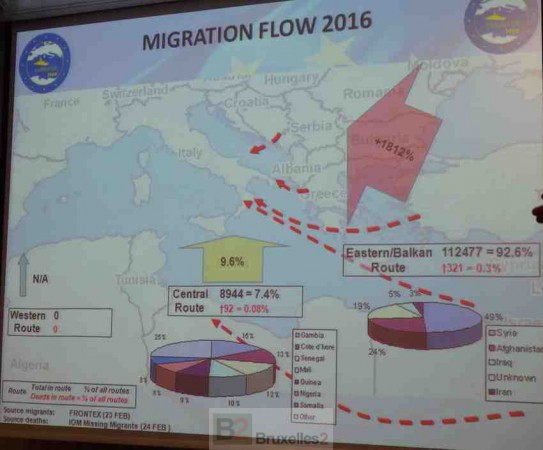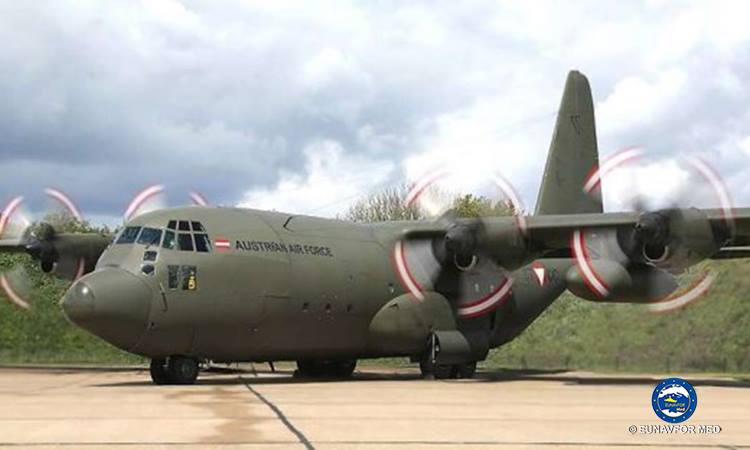Central route or eastern route? The two routes of migration today
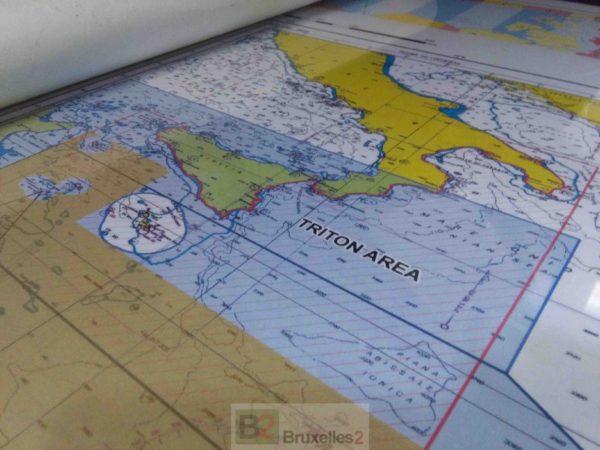
(B2 in the Mediterranean) The routes of migrants to Europe obey various imperatives. And they evolve according to many factors: the possibilities of the traffickers, the closures or openings of the borders of the countries of transit, the presence of police forces... or the weather.
In 2015, nearly one million passages
In 2015, 929.171 people crossed the Mediterranean to Europe, according to figures from Frontex.
La "central" Mediterranean route via Libya to Italy (Lampedusa, Sicily) was used by 16% of people: 154.725 (Eritreans, Nigerians, Somalis, Sudanese). Exactly, 2892 people died during the crossing, a fatal rate of 1,9%.
From September 2015, a trend reversal occurs, with a drop in flows (-9%) over the same period in 2015. The vast majority of these crossings (9 out of 10) are from Libya, a small 8% comes from Egypt, using motherships or ferries, the west coast of Egypt or the east coast of Libya to reach Europe.
The change took place in the second half. For several reasons. On the one hand, Egypt decided to control its border more tightly, thus closing the eastern route. On the other hand, the central route seemed more dangerous than the eastern route. Finally, we are witnessing a change in tactics by traffickers (Read article to follow). They lack large ships.
At the same time, nearly 900.000 people take the east mediterranean route, via Turkey, Greece, and the Balkans (exactly 880.820), or 83% of the crossings, with a lower mortality rate of 0,1%, 855 dead. Road frequented mainly by people from the eastern Middle East (Syrians, Afghans, Iraqis (Pakistanis, Iranians, others). This very marked increase in traffic takes place mainly from the summer.
La west road, via Morocco and Algeria to reach Spain or the Canary Islands remained more anecdotal. Only 3209 migrants managed to reach their goal. The flow was limited by “concerted efforts” in the countries of arrival (Spain), departure (and transit).
In 2016, major change: stabilization of traffic in the center, sustained pace in the east
La central mediterranean route suffered some increase (+ 9,6%). We can speak of a quasi-stabilization. Nearly 9000 people (8.944 people) passed through this route at the end of February (1). This represents 7,4% of migration traffic. In 2016, there were (only) 92 deaths, i.e. a fatal rate of 0,08%. And a noticeable drop compared to 2015. The weather was easier (only one day when there was a wind level above 3).
The people using this route clearly come from Africa, with for the most part what looks like economic migration: Gambians (15%), Ivorians (13%), Senegalese (12%), Malians (10%), Guineans (9 %), Nigerians (8%), Somalis (8%), and other nationalities (25%) (2).
Next to it, the eastern road — via Turkey and the Balkans — experienced a surge, with 112.477 people passing through in a few weeks (i.e. 92,6% of traffic): + 1812%! compared to the same period of the previous year. Which is logical. On the other hand, mortality increased, in number and percentage (321 dead, 0,3%). In winter, even if the weather is fairly mild this year, the sea remains rough.
The origin of these people clearly comes from countries at war in the Middle East or Asia (Syria, Afghanistan, Iraq), with the possibility of seeking asylum. However, there are alternative routes to the land journey (via the Balkans): the Adriatic route (via Bosnia-Herzegovina-Croatia or Albania).
In the first months of winter, the western road, via Spain experienced an almost complete closure (0 passages).
(Nicolas Gros-Verheyde)
(1) Source Frontex and IOM 23 and 24 February 2016
(2) These are the nationalities declared by migrants or asylum seekers or noted if they have papers.
